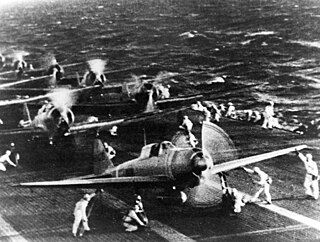 W
WThe Pacific War, sometimes called the Asia–Pacific War, was the theater of World War II that was fought in Asia, the Pacific Ocean, the Indian Ocean, and Oceania. It was geographically the largest theater of the war, including the vast Pacific Ocean theater, the South West Pacific theater, the South-East Asian theater, the Second Sino-Japanese War, and the Soviet–Japanese War.
 W
WThe Pacific Ocean theater of World War II was a major theater of the Pacific War, the war between the Allies and the Empire of Japan. It was defined by the Allied powers' Pacific Ocean Area command, which included most of the Pacific Ocean and its islands, while mainland Asia was excluded, as were the Philippines, the Dutch East Indies, Borneo, Australia, most of the Territory of New Guinea, and the western part of the Solomon Islands.
 W
WThe Asiatic-Pacific Theater was the theater of operations of U.S. forces during World War II in the Pacific War during 1941–1945. From mid-1942 until the end of the war in 1945, there were two U.S. operational commands in the Pacific. The Pacific Ocean Areas (POA), divided into the Central Pacific Area, the North Pacific Area and the South Pacific Area, were commanded by Fleet Admiral Chester W. Nimitz, Commander-in-Chief Pacific Ocean Areas. The South West Pacific Area (SWPA) was commanded by General of the Army Douglas MacArthur, Supreme Allied Commander South West Pacific Area. During 1945, the United States added the United States Strategic Air Forces in the Pacific, commanded by General Carl A. Spaatz.
 W
WPacific Ocean Areas was a major Allied military command in the Pacific Ocean theater of World War II. It was one of four major Allied commands during the Pacific War, and one of three United States commands in the Asiatic-Pacific Theater. Admiral Chester W. Nimitz of the U.S. Navy, Commander in Chief, U.S. Pacific Fleet, headed the command throughout its existence.
 W
WThe South Pacific Area (SOPAC) was a multinational U.S.-led military command active during World War II. It was a part of the U.S. Pacific Ocean Areas under Admiral Chester Nimitz.
 W
WThe South West Pacific theatre, during World War II, was a major theatre of the war between the Allies and the Axis. It included the Philippines, the Dutch East Indies, Borneo, Australia and its mandate Territory of New Guinea and the western part of the Solomon Islands. This area was defined by the Allied powers' South West Pacific Area (SWPA) command.
 W
WThe South-East Asian Theatre of World War II consisted of the campaigns of the Pacific War in Burma, India, Thailand, the Philippines, Indochina, Malaya and Singapore.
 W
WThe Asiatic–Pacific Campaign Medal is a United States military award of the Second World War, which was awarded to any member of the United States Armed Forces who served in the Asiatic-Pacific Theater from 1941 to 1945. The medal was created on November 6, 1942, by Executive Order 9265 issued by President Franklin D. Roosevelt. The medal was designed by Thomas Hudson Jones; the reverse side was designed by Adolph Alexander Weinman which is the same design as used on the reverse of the American Campaign Medal and European-African-Middle Eastern Campaign Medal.
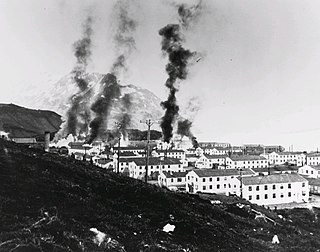 W
WThe Battle of Dutch Harbor took place on June 3–4, 1942, when the Imperial Japanese Navy launched two aircraft carrier raids on the Dutch Harbor Naval Operating Base and U.S. Army Fort Mears at Dutch Harbor on Amaknak Island, during the Aleutian Islands Campaign of World War II. The bombing marked the first aerial attack by an enemy on the continental United States, and was the second time in history that the continental U.S. was bombed by someone working for a foreign power, the first being the accidental bombing of Naco, Arizona in 1929.
 W
WBlack Sun, Red Moon is the first novel by British author Rory Marron. It is published in two parts, with the second part titled Merdeka Rising.
 W
WOn 15 June 1944, United States Marine and Army forces landed on the southwest coast of the island of Saipan in the central Marianas chain. US forces declared Saipan secure on 9 July.
 W
WLe Chasseur Zéro is a novel by the French writer, Pascale Roze. Published on August 22 of 1996, Le Chasseur Zero gained the attention of author François Nourissier, who was president of the Académie Goncourt at the time. It was then awarded the Prix Goncourt and the Prix du Premier Roman for the year of 1996.
 W
WThe Second Sino-Japanese War (1937–1945) was a military conflict that was primarily waged between the Republic of China and the Empire of Japan. The war made up the Chinese theater of the wider Pacific Theater of the Second World War. The beginning of the war is conventionally dated to the Marco Polo Bridge Incident on 7 July 1937, when a dispute between Japanese and Chinese troops in Peking escalated into a full-scale invasion. This full-scale war between the Chinese and the Empire of Japan is often regarded as the beginning of World War II in Asia. In 2017 the Ministry of Education in the People's Republic of China decreed that the term "eight-year war" in all textbooks should be replaced by "fourteen-year war", with a revised starting date of 18 September 1931 provided by the Japanese invasion of Manchuria. According to historian Rana Mitter, historians in China are unhappy with the blanket revision, and the Republic of China did not consider itself to be continuously at war with Japan over these six years. The Tanggu Truce of 1933 officially ended the earlier hostilities in Manchuria while the He-Umezu Agreement of 1935 acknowledged the Japanese demands to put an end to all anti-Japanese organizations in China.
 W
WGriffith Baily Coale was an American painter; best known for establishing the Navy Combat Art Program.
 W
WA code talker was a person employed by the military during wartime to use a little-known language as a means of secret communication. The term is now usually associated with United States service members during the world wars who used their knowledge of Native American languages as a basis to transmit coded messages. In particular, there were approximately 400 to 500 Native Americans in the United States Marine Corps whose primary job was to transmit secret tactical messages. Code talkers transmitted messages over military telephone or radio communications nets using formally or informally developed codes built upon their native languages. The code talkers improved the speed of encryption and decryption of communications in front line operations during World War II.
 W
WSS De Klerk was a Dutch passenger-cargo liner owned by NV Koninklijke Paketvaart Mij (KPM) Batavia.
 W
WThe Doolittle Raid, also known as the Tokyo Raid, was an air raid on 18 April 1942 by the United States on the Japanese capital Tokyo and other places on Honshu during World War II. It was the first air operation to strike the Japanese archipelago. It demonstrated that the Japanese mainland was vulnerable to American air attacks, served as retaliation for the attack on Pearl Harbor, and provided an important boost to American morale. The raid was planned by, led by, and named after Lieutenant Colonel James Doolittle.
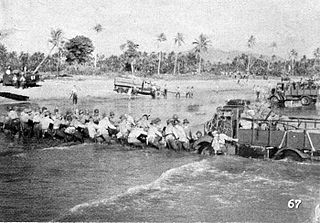 W
WThe Dutch East Indies campaign of 1941–1942 was the conquest of the Dutch East Indies by forces from the Empire of Japan in the early days of the Pacific campaign of World War II. Forces from the Allies attempted unsuccessfully to defend the islands. The East Indies were targeted by the Japanese for their rich oil resources which would become a vital asset during the war. The campaign and subsequent three and a half year Japanese occupation was also a major factor in the end of Dutch colonial rule in the region.
 W
WOperation FS was the Imperial Japanese plan to invade and occupy Fiji, Samoa, and New Caledonia in the south Pacific during the Pacific conflict of World War II. The operation was set to be executed in July or August 1942 following Operation MO, Operation RY, and Operation MI.
 W
WFunafuti International Airport is an airport in Funafuti, in the capital city of the island nation of Tuvalu. It is the sole international airport in Tuvalu. Fiji Airways operates between Suva and Funafuti. Air Kiribati provides one flight a week from Tarawa to Funafuti.
 W
WGuadalcanal Diary is a memoir written by war correspondent Richard Tregaskis and originally published by Random House on January 1, 1943. The book recounts the author's time with the United States Marine Corps on Guadalcanal in the early stages of the pivotal months-long battle there starting in 1942.
 W
WThe Japan campaign was a series of battles and engagements in and around the Japanese home islands, between Allied forces and the forces of Imperial Japan during the last stages of the Pacific campaign of World War II. The Japan campaign lasted from around June 1944 to August 1945.
 W
WAllied forces conducted many air raids on Japan during World War II, causing extensive destruction to the country's cities and killing between 241,000 and 900,000 people. During the first years of the Pacific War these attacks were limited to the Doolittle Raid in April 1942 and small-scale raids on military positions in the Kuril Islands from mid-1943. Strategic bombing raids began in June 1944 and continued until the end of the war in August 1945. Allied naval and land-based tactical air units also attacked Japan during 1945.
 W
WThe Battles of Khalkhin Gol were the decisive engagements of the undeclared Soviet–Japanese border conflicts fought among the Soviet Union, Mongolia, Japan and Manchukuo in 1939. The conflict was named after the river Khalkhin Gol, which passes through the battlefield. In Japan, the decisive battle of the conflict is known as the Nomonhan Incident after Nomonhan, a nearby village on the border between Mongolia and Manchuria. The battles resulted in the defeat of the Japanese Sixth Army.
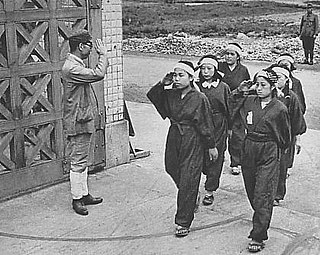 W
WKorean Women's Volunteer Labour Corps or Peninsula Women's Volunteer Corps was the Korean part of the Women's Volunteer Corps, which was created in April 1944 as a work group for Japanese and Korean women. Although its official purpose was to give women a chance to serve the Empire of Japan prior to marriage, it was a means to compel women to perform labor duties.
 W
WLeapfrogging, also known as island hopping, was a military strategy employed by the Allies in the Pacific War against the Empire of Japan during World War II.
 W
WThe Battle of Midway was a major naval battle in the Pacific Theater of World War II that took place on 4–7 June 1942, six months after Japan's attack on Pearl Harbor and one month after the Battle of the Coral Sea. The U.S. Navy under Admirals Chester W. Nimitz, Frank J. Fletcher, and Raymond A. Spruance defeated an attacking fleet of the Imperial Japanese Navy under Admirals Isoroku Yamamoto, Chūichi Nagumo, and Nobutake Kondō near Midway Atoll, inflicting devastating damage on the Japanese fleet that rendered their aircraft carriers irreparable. Military historian John Keegan called it "the most stunning and decisive blow in the history of naval warfare", while naval historian Craig Symonds called it "one of the most consequential naval engagements in world history, ranking alongside Salamis, Trafalgar, and Tsushima Strait, as both tactically decisive and strategically influential".
 W
WOuter Mongolia—officially the Mongolian People's Republic, was ruled by the communist government of Khorloogiin Choibalsan during World War II and was closely linked to the Soviet Union. Mongolia, with less than a million inhabitants, was considered a breakaway province of the Republic of China by most nations. Throughout the war with Germany, the country provided the Soviet Union with economic support, such as livestock, raw materials, money, food and military clothing, violating Mongolian neutrality in favor of the Allies. Mongolia was one of two Soviet satellites not generally recognised as sovereign nations at the time, the other being the Tuvan People's Republic, both of which participated in World War II.
 W
WThe Mont Tremblant Conference, or the Eighth International Conference of the Institute of Pacific Relations, was a conference held at Mont-Tremblant in Quebec, Canada, in December 1942, organized by the Institute of Pacific Relations. Unofficial delegates from 12 countries met to discuss the waging of World War II in the Pacific theatre, and the structure of international affairs after the war, with a particular focus on the welfare of countries in East Asia and Southeast Asia.
 W
WThe Naked and the Dead is a novel by Norman Mailer. Published by Rinehart & Company in 1948, when he was 25, it was his debut novel. It depicts the experiences of a platoon during World War II, based partially on Mailer's experiences as a cook with the 112th Cavalry Regiment during the Philippines Campaign in World War II. The book quickly became a bestseller, paving the way for other Mailer's works such as The Deer Park, Advertisements for Myself, and The Time of Our Time. He believed The Naked and the Dead to be his most renowned work. It was the first popular novel about the war and is considered one of the greatest English-language novels. It was later adapted into a film in 1958.
 W
WPacific Crucible: War at Sea in the Pacific, 1941–1942 is the first volume in the Pacific War trilogy written by best selling author and historian Ian W. Toll. The book is a narrative history of the opening phase of the Pacific War, which took place in the eastern Pacific between the Allies and the Empire of Japan. It was published by W. W. Norton & Company in 2011 and 2012 (paperback) and was released as an audiobook narrated by Grover Gardner by Audible Studios in 2011. The following volume in the trilogy, The Conquering Tide: War in the Pacific Islands, 1942-1944, was published in 2014; the final volume in the trilogy, Twilight of the Gods: War in the Western Pacific, 1944-1945, was published in 2020.
 W
WThe Conquering Tide: War in the Pacific Islands, 1942–1944 is the second volume in the Pacific War trilogy written by best selling author and historian Ian W. Toll. The book is a narrative history of the middle phase of the Pacific War, which took place in the central and southern Pacific between the Allies and the Empire of Japan. It was published by W. W. Norton & Company in 2015 and 2016 (paperback). It was released as an audiobook narrated by P. J. Ochlan by Recorded Books in 2015. The first volume in the trilogy, Pacific Crucible: War at Sea in the Pacific, 1941–1942, was published in 2011; the final volume in the trilogy, Twilight of the Gods: War in the Western Pacific, 1944–1945, was published in 2020.
 W
WTwilight of the Gods: War in the Western Pacific, 1944–1945 is the final volume in the Pacific War trilogy written by best selling author and historian Ian W. Toll. The book is a narrative history of the final phase of the Pacific War, that took place in the western Pacific between the Allies and the Empire of Japan. It was published by W. W. Norton & Company in 2020. It was also released as an audiobook narrated by P. J. Ochlan by Recorded Books in 2020. The first volume in the trilogy, Pacific Crucible: War at Sea in the Pacific, 1941–1942, was published in 2011; the second volume in the trilogy, The Conquering Tide: War in the Pacific Islands, 1942-1944, was published in 2015.
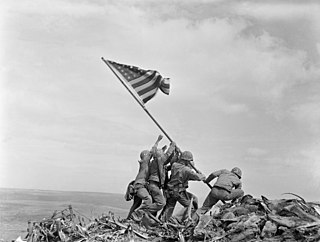 W
WThe Pacific War Trilogy is a three-volume history of the war in the Pacific, written by best selling author and military historian Ian W. Toll. The series was published by W. W. Norton & Company. Toll is a graduate of St George's School in Middletown, Rhode Island. In 1989 he received an undergraduate degree in American history from Georgetown University; in 1995 he received a master's degree in public policy from the Kennedy School of Government at Harvard University.
 W
WThe Pearl Harbor advance-knowledge conspiracy theory is the argument that U.S. Government officials had advance knowledge of Japan's December 7, 1941, attack on Pearl Harbor. Ever since the Japanese attack, there has been debate as to how and why the United States had been caught off guard, and how much and when American officials knew of Japanese plans for an attack. In September 1944, John T. Flynn, a co-founder of the non-interventionist America First Committee, launched a Pearl Harbor counter-narrative when he published a forty-six page booklet entitled The Truth about Pearl Harbor.
 W
WMaurice Herbert Rindskopf (1917–2011) was the youngest officer to ascend to command of a Fleet Submarine in World War II; and until his death, was the last living World War II submarine commander. His entire World War II submarine career was spent on board USS Drum (SS-228), where he was awarded a Silver Star as a lieutenant in charge of torpedoes and gunnery, and the Navy Cross as its commanding officer. He culminated his career as a Rear Admiral and the Director of Naval Intelligence.
 W
WOperation RY was the Imperial Japanese plan to invade and occupy Nauru and Ocean islands in the south Pacific during the Pacific conflict of World War II. The operation was originally set to be executed in May 1942 immediately following Operation MO and before Operation MI, which resulted in the Battle of Midway. The primary reason for the operation was to exploit the islands' supplies of phosphate. After a postponement due to interference by enemy forces, the operation was completed in August 1942.
 W
WThe Second Sino-Japanese War (1937–1945) was a military conflict that was primarily waged between the Republic of China and the Empire of Japan. The war made up the Chinese theater of the wider Pacific Theater of the Second World War. The beginning of the war is conventionally dated to the Marco Polo Bridge Incident on 7 July 1937, when a dispute between Japanese and Chinese troops in Peking escalated into a full-scale invasion. This full-scale war between the Chinese and the Empire of Japan is often regarded as the beginning of World War II in Asia. In 2017 the Ministry of Education in the People's Republic of China decreed that the term "eight-year war" in all textbooks should be replaced by "fourteen-year war", with a revised starting date of 18 September 1931 provided by the Japanese invasion of Manchuria. According to historian Rana Mitter, historians in China are unhappy with the blanket revision, and the Republic of China did not consider itself to be continuously at war with Japan over these six years. The Tanggu Truce of 1933 officially ended the earlier hostilities in Manchuria while the He-Umezu Agreement of 1935 acknowledged the Japanese demands to put an end to all anti-Japanese organizations in China.
 W
WThe Seishin Operation, also called Chongjin Landing Operation, was an amphibious assault on northern Korea between August 13-17, 1945, carried out by the forces of the Soviet Northern Pacific Flotilla of the Pacific Fleet during the Soviet–Japanese War at the end of World War II.
 W
WSouth Field was a World War II airfield on Iwo Jima in the Volcano Islands, located in the Central Pacific. The Volcano Islands are part of Japan. The airfield was located on the southern corner of Iwo Jima located on the Motoyama plateau, to the north of Mount Suribachi. South Field was significant to the overall Battle of Iwo Jima.
 W
WSouth Pacific is a musical composed by Richard Rodgers, with lyrics by Oscar Hammerstein II and book by Hammerstein and Joshua Logan. The work premiered in 1949 on Broadway and was an immediate hit, running for 1,925 performances. The plot is based on James A. Michener's Pulitzer Prize–winning 1947 book Tales of the South Pacific and combines elements of several of those stories. Rodgers and Hammerstein believed they could write a musical based on Michener's work that would be financially successful and, at the same time, send a strong progressive message on racism.
 W
WThe South Pacific air ferry route was initially established in the 1920s to ferry United States Army Air Service aircraft to the Philippines. As the Japanese threat in the Far East increased in 1940, General Douglas MacArthur planned that in the event of war, the United States Army Air Corps would play a major role in defending the Philippines. The reinforcement by the Air Corps of forces in the Philippines, and later Allied forces in Australia, became the basis for developing the South Pacific air ferry route used during World War II.
 W
WThe Southeast Pacific Area was one of the designated area commands created by the Combined Chiefs of Staff in the Pacific region during World War II. It was responsible to the Joint Chiefs of Staff via the Commander-in-Chief of the United States Navy (COMINCH), Admiral Ernest King. Rear Admiral Abel T. Bidwell, former commander of Cruiser Division Three, commanded the Southeast Pacific Area during the first months of the war.
 W
WThe Soviet assault on Maoka was carried out at the port of Maoka, Southern Sakhalin during August 19-22, 1945, by the forces of the Soviet Northern Pacific Flotilla of the Pacific Fleet during the South Sakhalin Offensive of the Soviet–Japanese War at the end of World War II. It was the second amphibious assault on South Sakhalin, after the Soviet assault on Toro on August 16.
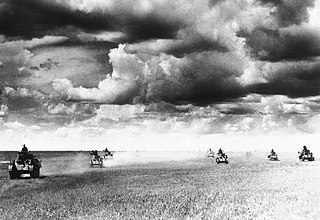 W
WThe Soviet–Japanese border conflicts, also known as the Soviet-Japanese Border War, was an undeclared border conflict fought between the Soviet Union and Japan in Northeast Asia from 1932 to 1939.
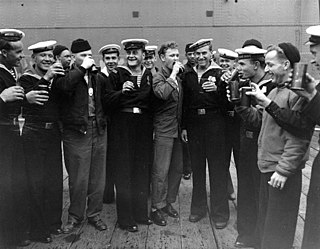 W
WThe Soviet–Japanese War, known in Mongolia as the Liberation War of 1945 was a military conflict within the Second World War beginning soon after midnight on 9 August 1945, with the Soviet invasion of the Japanese puppet state of Manchukuo. The Soviets and Mongolians ended Japanese control of Manchukuo, Mengjiang, northern Korea, Karafuto, and the Chishima Islands. The defeat of Japan's Kwantung Army helped bring about the Japanese surrender and the termination of World War II. The Soviet entry into the war was a significant factor in the Japanese government's decision to surrender unconditionally, as it made apparent that the Soviet Union was not willing to act as a third party in negotiating an end to hostilities on conditional terms.
 W
WTales of the South Pacific is a Pulitzer Prize-winning collection of sequentially related short stories by James A. Michener about the Pacific campaign in World War II. The stories are based on observations and anecdotes he collected while stationed as a lieutenant commander in the US Navy at the Espiritu Santo Naval Base on the island of Espiritu Santo in the New Hebrides Islands.
 W
WTask Force 44 was an Allied naval task force during the Pacific Campaign of World War II. The task force consisted of warships from the United States Navy and the Royal Australian Navy (RAN). It was generally assigned as a striking force to defend northeast Australia and the surrounding area from any attacks by Axis forces, particularly from the Empire of Japan.
 W
WThe Thin Red Line is American author James Jones's fourth novel. It draws heavily on Jones's experiences at the Battle of Mount Austen, the Galloping Horse, and the Sea Horse during World War II's Guadalcanal campaign. The author served in the United States Army's 27th Infantry Regiment, 25th Infantry Division.
 W
WDuring World War II, the United States Army Air Forces established a series of airfields in Australia for the collective defense of the country, as well as for conducting offensive operations against the Imperial Japanese Army and Navy. From these airports and airfields in Australia, the Fifth Air Force was able to regroup, re-equip and begin offensive operations against the Empire of Japan after the disasters in the Philippines and Dutch East Indies during 1942.
 W
WDuring World War II, the United States Army Air Forces engaged in combat against the Empire of Japan in the South Pacific Area. As defined by the War Department, this consisted of the Pacific Ocean areas which lay south of the Equator between longitude 159° East and 110° West. It included New Zealand, New Caledonia, New Hebrides, Fiji, and most of the Solomon Islands.
 W
WDuring World War II, the United States Army Air Forces engaged in combat against the air, ground and naval forces of the Empire of Japan in the South West Pacific Theatre.
 W
WThe United States Army Pacific (USARPAC) is an Army Service Component Command (ASCC) designated by the Secretary of the Army (SECARMY), it may also serve as a Joint Task Force headquarters. It is the army component unit of the United States Indo-Pacific Command, and it's mission is to support the Commander, United States Indo-Pacific Command. The main areas that this command has jurisdiction in include Hawaii, Alaska, the Pacific Ocean, South Korea and Japan. It also performs missions in Southeast Asia, in the countries stretching from the Philippines all the way to Bangladesh and India. United States Forces Korea (USFK) has operational command and control on US Forces in Korea since January 2012, and USARPAC headquarters oversees the manning, training, and equipping of US Army forces assigned to USFK.
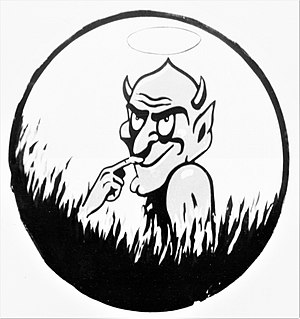 W
WFighting Squadron 18 (VF-18) was an aviation unit of the United States Navy which served aboard USS Intrepid (CV-11) in the fall of 1944. It was the second squadron to bear the designation VF-18.
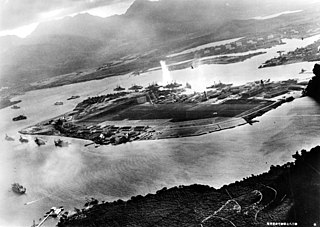 W
WSeveral reports prior to Japan's attack on Pearl Harbor in 1941 indicated that the base was vulnerable to attack. This has sometimes been noted in Pearl Harbor advance-knowledge conspiracy theories.
 W
WThe World War II Allied names for Japanese aircraft were reporting names, often described as codenames, given by Allied personnel to Imperial Japanese aircraft during the Pacific campaign of World War II. The names were used by Allied personnel to identify aircraft operated by the Japanese for reporting and descriptive purposes. Generally, Western men's names were given to fighter aircraft, women's names to bombers, transports, and reconnaissance aircraft, bird names to gliders, and tree names to trainer aircraft.